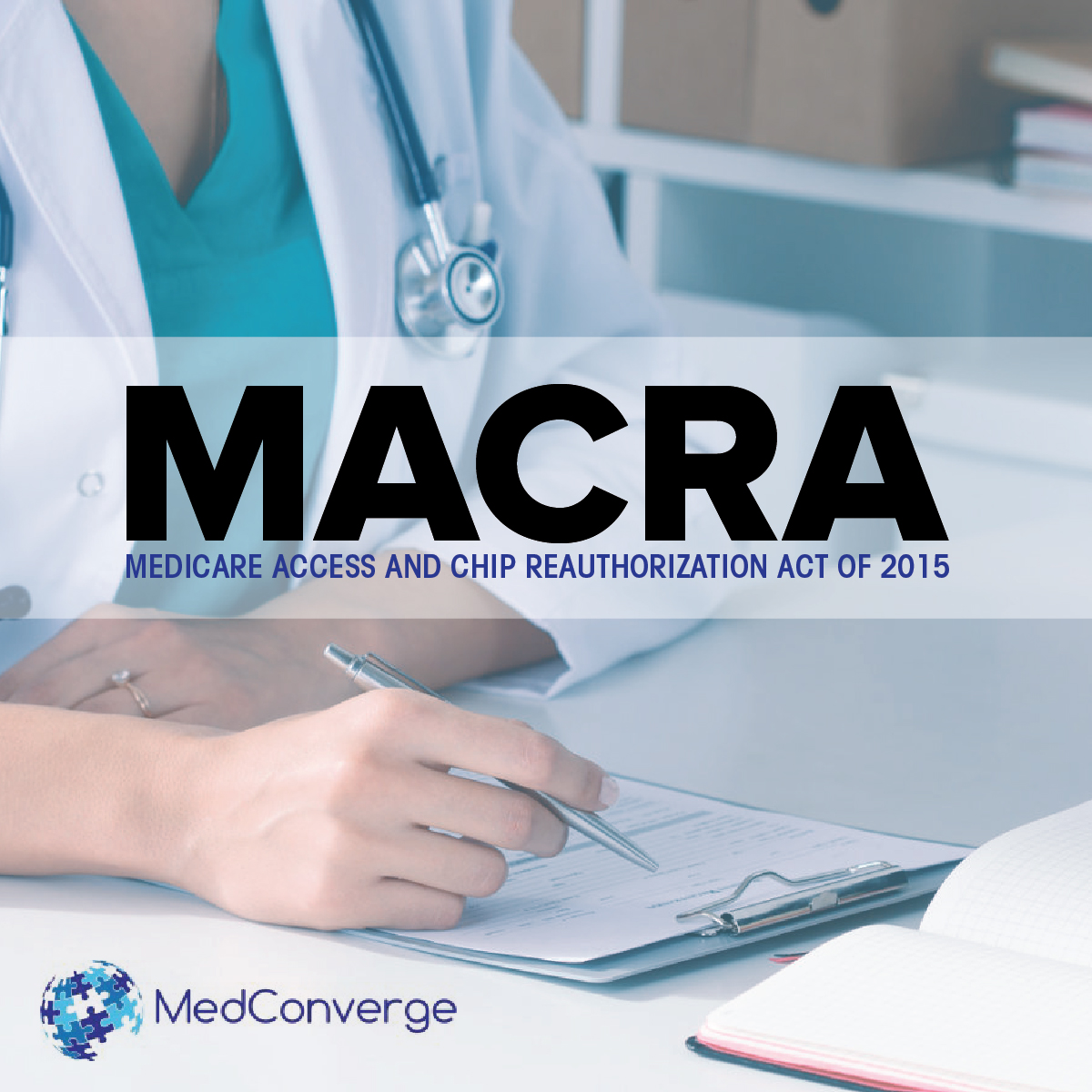April 28, 2016 witnessed the release of the proposed rule that is intended to guide the implementation of MACRA (Medicare Access and CHIP Reauthorization Act of 2015) which aims to reward clinicians and physicians engaging in activities that support and drive positive patient outcomes. MACRA, once implemented in totality, will change the way physicians taking care of Medicare patients are paid by CMS. Ever since the release of the proposed rule, there have been constant debates and discussions on the impact of MACRA, resulting in the AAFP and more than hundred organizations writing to CMS on June 24, 2016 with their suggestions and push for renewed action.
What is MACRA?
MACRA aims to streamline reimbursement reporting which will depending on the quality of care provided and a host of other measures, eventually result in bonuses for clinicians and doctors who perform well. However, it will also bring negative incentives for those whose performance is below par. With an aim to make the reporting process simple and align it with commercial reporting, MACRA is the next step in the evolution of value-based healthcare.
As its goal, MACRA will attempt to reduce the current heavy burden of reporting that most physicians and clinicians find impedes their delivery of high quality care by taking too much time away from their primary work – healthcare delivery. Some of the measures proposed through MACRA to help reduce this burden are:
- Reporting on technology use to be done once every year instead of the current 90 day cycle.
- Number of measures to be reduced to 11 from the current 18.
- Offer multiple options at various reporting points to provide flexibility and control.
- The ‘all-or-nothing’ approach to technology measures to be eliminated.
The Reimbursement Method
Clinician reimbursement under MACRA will be covered under two payment tracks –APMs (Advanced Alternative Payment Models) and MIPS (Merit Based Incentive Payment Systems). Physicians and clinicians will need to establish their baselines in 2017, which is going to be the first measurement year for reimbursements starting in 2019. In the first measurement year, all eligible clinicians and physicians will need to report through MIPS. It will be up to CMS to determine the physicians and clinicians who qualify to report through the APM track. However, clinicians and physicians will have the liberty to choose their own reporting track from the second year onwards, thus giving them the flexibility to report between the two tracks based on their practice. MACRA intends to thus create a reporting structure that is tailor made to the needs of each individual practice.
While those reporting through APMs can earn annual bonuses of 5%, the ones reporting through MIPS can earn or lose 4% in 2019, 5% in 2020, 7% in 2021 and 9% in 2022.
Why are Physicians Unhappy with MACRA?
According to physicians and the AAFP, the proposed rule is “overly complex and burdensome” for all physicians. In the letter addressed to CMS Acting Administrator Andy Slavitt, the AAFP and more than 100 other organizations have asked for action on three main fronts:
- Simplification of the Merit-Based Incentive Payment System (MIPS) in order to help physicians improve performance, but with fewer administrative and compliance burdens.
- A stronger pathway to alternative payment models (APMs) that will support physicians eager to transition to new delivery and payment models.
- Support physicians in solo, small and rural practices, thus providing them with opportunities for success and help avoid unintended consequences.
With reference to MIPs, the organizations feel that “it should create a more unified reporting program with greater choice and fewer requirements.” The proposed rule lays out four components as separate programs which according to the letter “has created significant complexity in the program as a whole, leading us to be very concerned that physicians will not be able to understand the complete MIPS program.” The letter proposes more than a dozen suggestions to improve MIPS, with some of them listed below:
- Create more opportunities for partial credit and reduce the number of required measures within MIPS.
- Consider the differences in practice size, specialty group and availability of measures and then provide greater flexibility “to address the unique concerns of small, rural and other practices”.
- Reduce the proposed increase in the reporting threshold for quality measures.
- Focus on methodological improvements and, in particular, work to eliminate flaws that have made practices carrying the largest number of high-risk patients “more susceptible to penalties than other physicians.”
- Speed up the adoption of the virtual group concept from the proposed 2018 implementation date, without which small practices may face even greater challenges when attempting to move into the MIPS program structure.
Regarding APMs, the organizations in their letter stated, “with multiple components that include total risk, marginal risk and minimum loss rate, it would be difficult for physicians contemplating participation in advanced APMs to understand their financial risks and avoid losses.” They also pointed out that although MACRA provides two pathways for physician participation, the proposed rule limits opportunity by tightening participation. Voicing concern about the review process by CMS for APM proposals, the letter stated, “Physicians are especially concerned by comments from some CMS officials that stakeholder models proposed by the independent advisory committee established by Congress will then have to go through the entire CMS model review process, which suggests it will be years before any physician-focused APMs are available.”
However, the biggest concern is that MACRA will negatively affect small physician practices the most. This is because small practices will find it harder to obtain the technology and data to demonstrate the quality requirements. Medicare projections show that the vast majority of physicians in groups of less than 10 will suffer negative incentives. Since MACRA is revenue-neutral, bonuses paid to achievers will be cut from underperformers, to ensure that the cost of the program does not rise. Under these circumstances, access to data will become critical – something that small and single physician practices will find difficult to supply.



